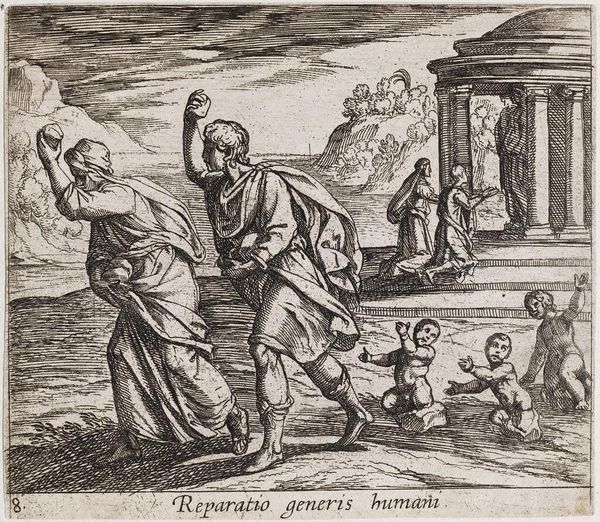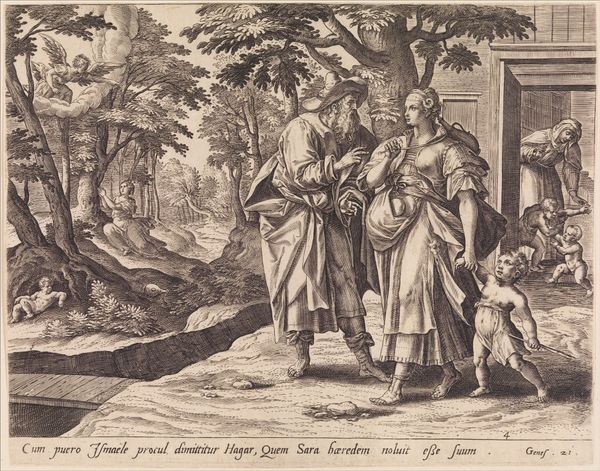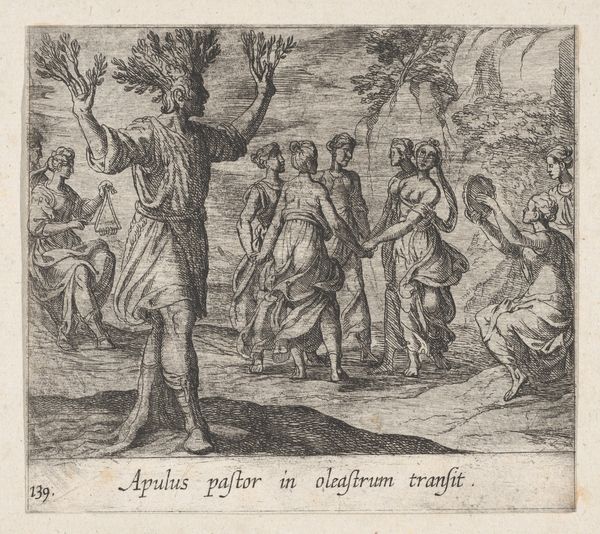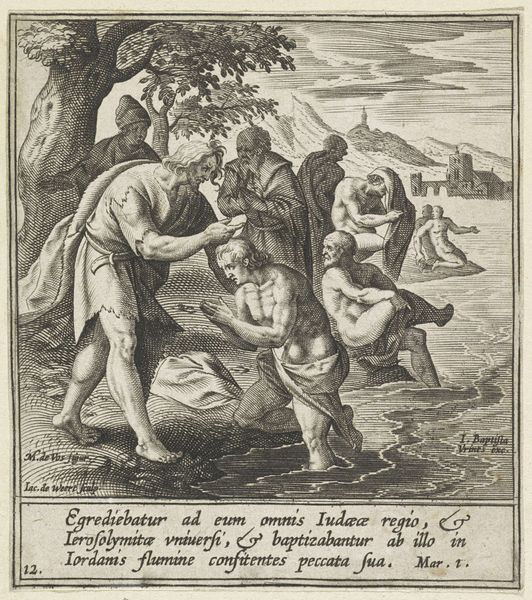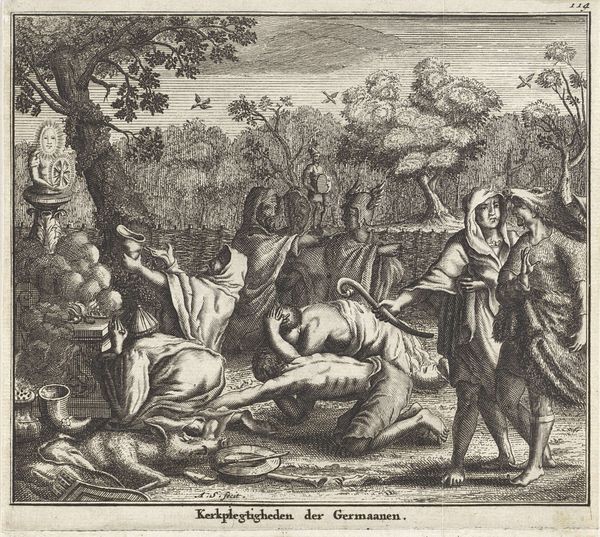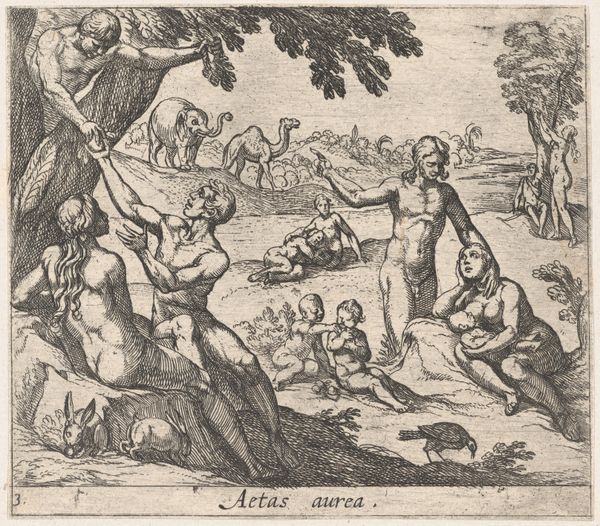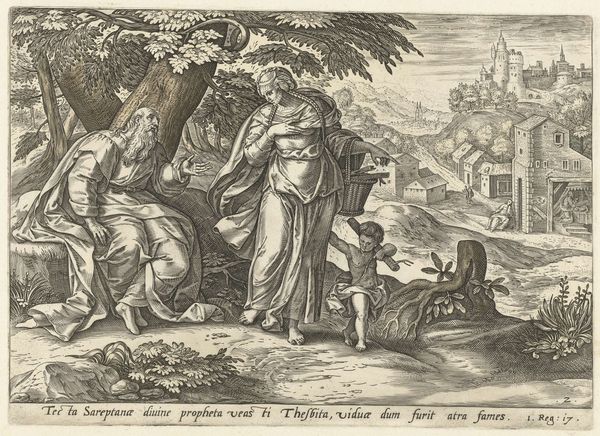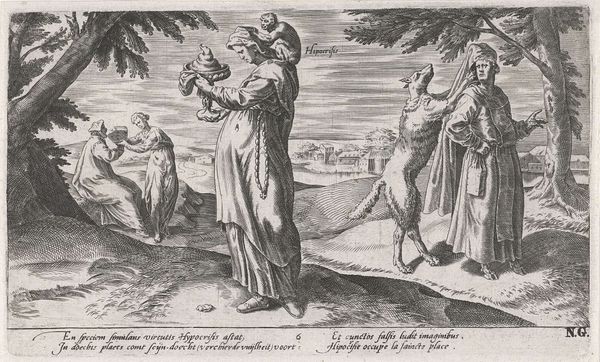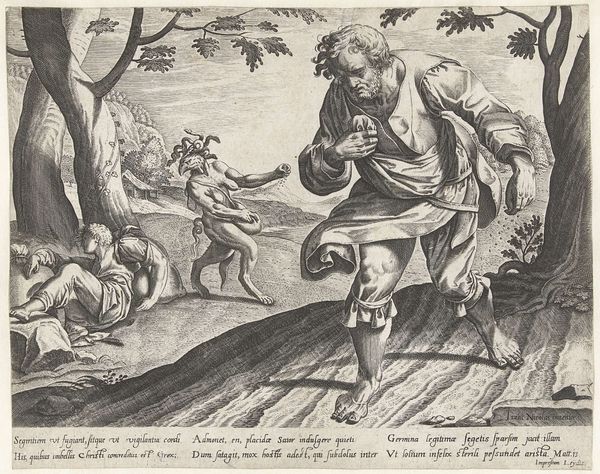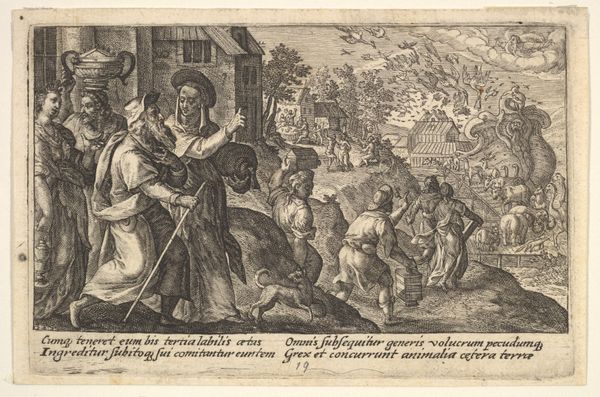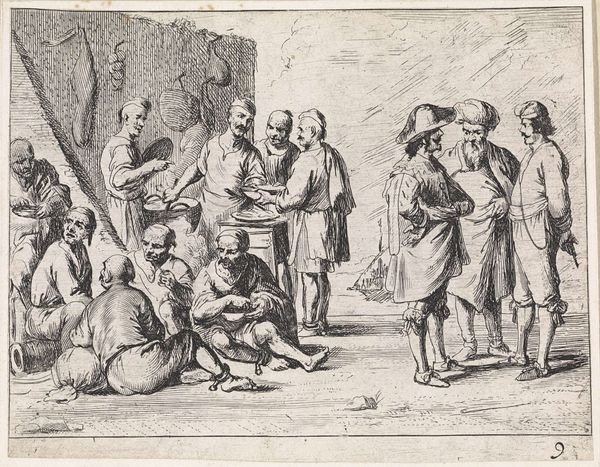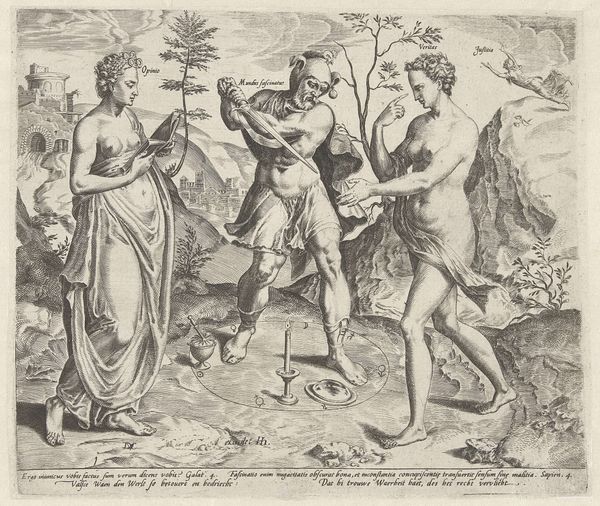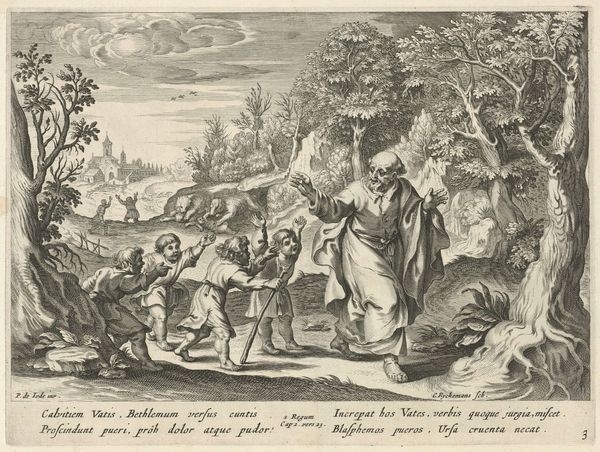
Plate 8: The Rebirth of Mankind (Reparatio generis humani), from Ovid's 'Metamorphoses' 1606
0:00
0:00
drawing, print, engraving
#
drawing
# print
#
figuration
#
child
#
men
#
history-painting
#
italian-renaissance
#
engraving
Dimensions: Sheet: 4 1/8 × 4 9/16 in. (10.4 × 11.6 cm)
Copyright: Public Domain
Editor: This is Antonio Tempesta’s 1606 engraving, "Plate 8: The Rebirth of Mankind" from Ovid's *Metamorphoses*, currently residing at the Met. It feels strangely…hopeful, despite the rather dramatic figures. What story do you think it’s trying to tell, and what catches your eye first? Curator: Oh, it's absolutely brimming with narrative! Immediately, I'm drawn to the dynamic movement of the figures – the man and woman hurling stones over their shoulders, almost reluctantly. And then, bam! Behind them, life springs forth. Little figures emerging, representing a new dawn after what sounds like a right cataclysm in Ovid's tale. It makes you wonder, doesn't it? Is rebirth always a bit messy, a bit… backward-looking? I find myself pondering what *stones* we are still casting over our shoulders. Editor: That’s a beautiful interpretation, really. I initially just saw chaotic energy, but your framing makes it feel so much more layered. So, the figures throwing stones - what do you make of the classical architecture shown behind them? Does it tie into the concept? Curator: Ah, the architecture! Think of it as a stage, a backdrop for this cosmic drama. It’s Roman, of course, alluding to a specific cultural and historical context – a world steeped in myth and ritual, ripe for cycles of destruction and renewal. And consider this: the figures praying at the temple might be seen as appealing to the gods, to whatever force governs this messy regeneration. Perhaps hoping it will go smoother the next time. Don’t we all wish for that sometimes? Editor: I hadn't considered that element of supplication. I can see your point - It definitely emphasizes the struggle in creation and new beginnings! Curator: Absolutely. A touch of the human element, don’t you think? It gives depth to the message and gives us insight into human life. I guess what stays with me is how Tempesta uses myth not just to recount a story, but to prompt a meditation on what rebirth, personally or culturally, really demands of us. What did you discover in it all, after all of this then? Editor: Definitely more to it than meets the eye, thanks! I now see there’s both messiness and intentionality, which brings to light the idea of catharsis within creation.
Comments
No comments
Be the first to comment and join the conversation on the ultimate creative platform.
